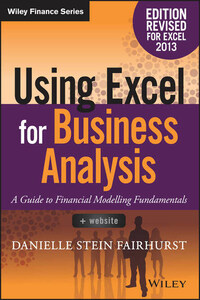The Wiley Finance series contains books written specifically for finance and investment professionals as well as sophisticated individual investors and their financial advisors. Book topics range from portfolio management to e-commerce, risk management, financial engineering, valuation and financial instrument analysis, as well as much more. For a list of available titles, visit our Web site at www.WileyFinance.com.
Founded in 1807, John Wiley & Sons is the oldest independent publishing company in the United States. With offices in North America, Europe, Australia, and Asia, Wiley is globally committed to developing and marketing print and electronic products and services for our customers' professional and personal knowledge and understanding.
Cover image: ©Leontura/iStockphoto.com and ©solarseven/iStockphoto.com
Cover design: Wiley
Copyright © 2015 by John Wiley & Sons Singapore Pte. Ltd.
Published by John Wiley & Sons Singapore Pte. Ltd.
1 Fusionopolis Walk, #07-01, Solaris South Tower, Singapore 138628
All rights reserved.
No part of this publication may be reproduced, stored in a retrieval system, or transmitted in any form or by any means, electronic, mechanical, photocopying, recording, scanning, or otherwise, except as expressly permitted by law, without either the prior written permission of the Publisher, or authorization through payment of the appropriate photocopy fee to the Copyright Clearance Center. Requests for permission should be addressed to the Publisher, John Wiley & Sons Singapore Pte. Ltd., 1 Fusionopolis Walk, #07-01, Solaris South Tower, Singapore 138628, tel: 65-6643-8000, fax: 65-6643-8008, e-mail: [email protected].
Limit of Liability/Disclaimer of Warranty: While the publisher and author have used their best efforts in preparing this book, they make no representations or warranties with respect to the accuracy or completeness of the contents of this book and specifically disclaim any implied warranties of merchantability or fitness for a particular purpose. No warranty may be created or extended by sales representatives or written sales materials. The advice and strategies contained herein may not be suitable for your situation. You should consult with a professional where appropriate. Neither the publisher nor the author shall be liable for any damages arising herefrom.
Other Wiley Editorial Offices
John Wiley & Sons, 111 River Street, Hoboken, NJ 07030, USA
John Wiley & Sons, The Atrium, Southern Gate, Chichester, West Sussex, P019 8SQ, United Kingdom
John Wiley& Sons (Canada) Ltd., 5353 Dundas Street West, Suite 400, Toronto, Ontario, M9B 6HB, Canada
John Wiley& Sons Australia Ltd., 42 McDougall Street, Milton, Queensland 4064, Australia
Wiley-VCH, Boschstrasse 12, D-69469 Weinheim, Germany
ISBN 978-1-119-06246-2 (Paperback)
ISBN 978-1-119-06245-5 (ePDF)
ISBN 978-1-119-06244-8 (ePub)
ISBN 978-1-119-07001-6 (o-Book)
This book was written from course materials compiled over many years of training in analytical courses in Australia and globally – most frequently courses such as Financial Modelling in Excel, Data Analysis & Reporting in Excel, and Budgeting & Forecasting in Excel, both as face-to-face workshops and online courses. The common theme is the use of Microsoft Excel, and I’ve refined the content to suit the hundreds of participants and their questions over the years. This content has been honed and refined by the many participants in these courses, who are my intended readers. This book is aimed at you, the many people who seek financial analysis training (either by attending a seminar or self-paced by reading this book) because you are seeking to improve your skills to perform better in your current role, or to get a new and better job.
When I started financial modelling in the early nineties, it was not called financial modelling– it was just “using Excel for business analysis,” and this is what I’ve called this book. It was only just after the new millennium that the term financial modelling gained popularity in its own right and became a required skill often listed on analytical job descriptions. This book spends quite a bit of time in Chapter 1 defining the meaning of a financial model, as it’s often thought to be something that is far more complicated than it actually is. Many analysts I’ve met are building financial models already without realising it, but they do themselves a disservice by not calling their models, “models”!
However, those who are already building financial models are not necessarily following good modelling practice as they do so. Chapter 3 is dedicated to the principles of best modelling practice, which will save you a lot of time, effort, and anguish in the long run. Many of the principles of best practice are for the purpose of reducing the possibility of error in your model, and there is a whole section on strategies for reducing error in Chapter 4.








